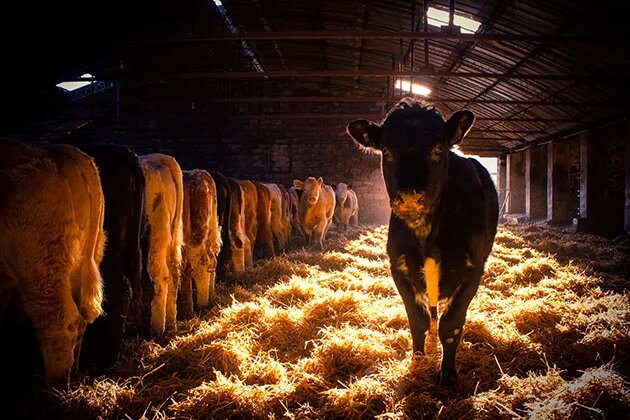
BERLIN – Factory-style livestock production is a critical driver of agricultural industrialization. Its remorseless expansion is contributing to climate change, deforestation, biodiversity loss, and human-rights violations – all to satisfy Western societies’ unhealthy appetite for cheap meat.
Europe and the United States were the largest meat consumers in the twentieth century, with the average person eating 60-90 kilograms (132-198 pounds) annually – far more than is required to meet humans’ nutritional needs. Though Western consumption rates are now stagnating and even declining in some regions, they remain far higher than in most other regions in the world.
Meanwhile, in emerging economies – especially the so-called BRICS (Brazil, Russia, India, China, and South Africa) – members of the burgeoning middle class are changing their diets to resemble those of their rich-country counterparts. In the coming decades, as incomes continue to rise, so will demand for meat and dairy products.
To meet this demand, the world’s agribusiness firms will attempt to boost their annual meat output from 300 million tons today to 480 million tons by 2050, generating serious social challenges and ecological pressures at virtually every stage of the value chain (feed supply, production, processing, and retail).
One major problem with factory-style livestock production is that it leads to considerable greenhouse-gas emissions – and not just because the digestive processes of ruminant animals produce methane. The waste from the animals, together with the fertilizers and pesticides used to produce feed, generate large quantities of nitrogen oxides.
Indeed, the factory model implies significant land-use change and deforestation, beginning with the production of feed. As it stands, about one-third of existing agricultural land is used for feed production, with the total share used for livestock production, including grazing, amounting to about 70%.
With expanded meat consumption, soybean production alone would nearly double, implying a proportional increase in the use of inputs like land, fertilizer, pesticides, and water. Increased crop diversion to feed livestock will put upward pressure on food and land prices, making it increasingly difficult for the world’s poor to meet their basic nutritional needs.
Making matters worse, the shift from mixed-use or indigenous systems of raising livestock to large-scale operations jeopardizes rural livelihoods, particularly in developing countries. Pastoralists, small producers, and independent farmers simply cannot compete with low retail prices that fail to account for the industry’s true environmental and health costs. And the industrial livestock system, with its low wages and poor health and safety standards, does not provide a good alternative for employment.
Finally, there is the public-health impact of industrial livestock production. For starters, excessively high levels of meat and dairy consumption are contributing to nutrition-related health problems like obesity and cardiovascular disease. Moreover, keeping large concentrations of animals in confined spaces facilitates the proliferation of infectious diseases that can spread to humans, such as avian flu. And measures used to mitigate that risk, such as the administration of low doses of antibiotics to prevent disease (and promote growth), are creating a public-health crisis by strengthening resistance to antimicrobial drugs.
Add to this the horrific conditions suffered by the animals themselves, owing to the industry’s resistance to applying reasonable animal-welfare standards, and one might wonder how the industry could have been allowed to grow so large. The answer lies in its oligopolistic power, which enables industrial livestock producers to externalize their true social and environmental costs, which must then be covered by workers and taxpayers.
The reality is that there are other ways to meet the world’s need for meat and dairy. In the European Union, only two key elements of the Common Agricultural Policy (CAP) would have to be changed to reduce drastically the distortions in the production system. Implementing these changes would send a clear signal that European policymakers take consumers’ wishes seriously.
The first change would be to prohibit imports of genetically modified feed, and require that farmers produce at least half of their animal feed on their own farms. A clear set of rules on feed procurement would eliminate international imbalances in nutrients, and diminish the power of multinational agricultural biotechnology corporations like Monsanto. Moreover, slurry and manure would no longer be transported long distances, and could be used to fertilize farmers’ own land to produce feed.
Second, the unnecessary administration of antibiotics in feed and watering systems should be prohibited. This would force farmers to treat animals individually for illnesses, based on veterinary diagnosis.
In the United States, the Food and Drug Administration could ban the non-therapeutic use of antibiotics. And the US Department of Agriculture’s farm bill programs could provide increased support for free-range livestock operations, in order to encourage more sustainable approaches to meat production.
Of course, these actions would be only important first steps. As emerging-economy middle classes grow, it is vital to recognize that existing Western models of meat production and consumption do not provide a sound blueprint for the future. It is time to create a system that adheres to our ecological, social, and ethical boundaries.
---
Writen by Christine Chemnitz & Shefali Sharma
Read the original article in project-syndicate.org